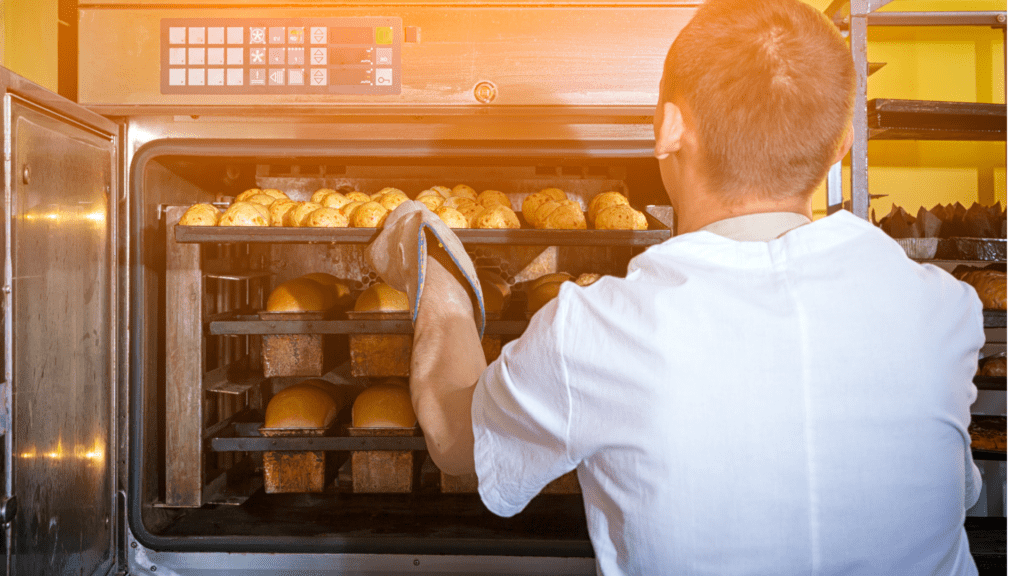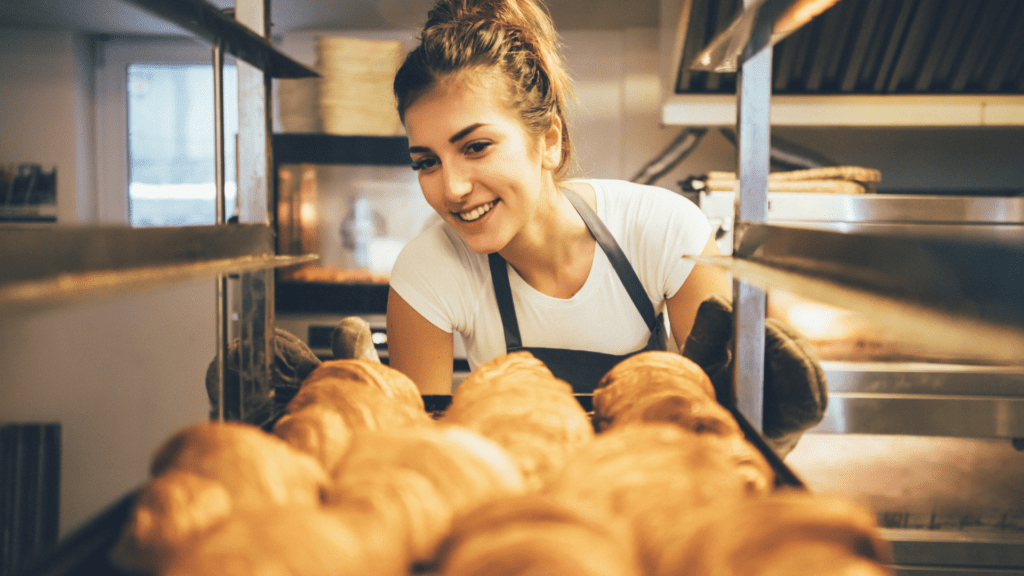Introduction: Unleashing the Artistry of Fermented Dough
In the realm of culinary delights, few experiences match the satisfaction of creating the perfect loaf of bread. For those passionate about the art of baking, mastering the craft of fermented dough handling is a journey that intertwines science, skill, and a touch of intuition. In this article, we’ll delve into the secrets that elevate your dough handling from amateur to expert, ensuring your creations rise to perfection.
The Foundation: Understanding the Science Behind Fermentation
Before embarking on the journey of crafting exquisite fermented dough, it’s crucial to comprehend the science at play. Fermentation is a natural process where yeast and bacteria interact with sugars, producing carbon dioxide and ethanol. In the context of dough, this leads to the rise and the characteristic texture and flavor. Choosing the right flour, water, and yeast, and understanding their ratios, sets the foundation for success.
Subheading 1: Flour Power – The Backbone of Exceptional Dough
The choice of flour is akin to selecting the canvas for a masterpiece. Each type of flour contributes distinct characteristics to the dough, influencing its texture, structure, and flavor. Bread flour, with its higher protein content, results in a chewier texture, while all-purpose flour offers a more balanced outcome. Experimenting with different flours empowers you to tailor your dough to match your desired outcome.
Subheading 2: Hydration Harmony – Balancing Water for Optimal Texture
Water is the silent conductor orchestrating the fermentation symphony. Achieving the right hydration level is pivotal in determining the texture of your dough. Too much water can lead to a sticky, unmanageable mass, while too little can result in a dry and dense end product. Finding the perfect balance, often through gradual adjustments and keen observation, unlocks the full potential of your dough.
Subheading 3: Yeast Mastery – Nurturing the Microscopic Architects
Yeast, the microscopic marvel responsible for fermentation, is a baker’s best friend and greatest challenge. Understanding the different types of yeast and their behaviors allows you to manipulate the rising process. Whether using commercial yeast or cultivating your sourdough starter, maintaining the right environment – temperature, time, and patience – is the key to coaxing yeast into creating the ideal structure and flavor in your dough.
The Artistry: Techniques for Expert Dough Handling
With the foundational knowledge in place, it’s time to delve into the hands-on techniques that transform dough handling into an art form.
Subheading 1: The Gentle Touch – Kneading with Finesse
Kneading is more than a physical exertion; it’s a dance with your dough. Overkneading can lead to a tough texture, while underkneading may result in uneven fermentation. Mastering the balance requires a gentle touch, feeling the dough’s elasticity, and understanding when it has reached the perfect consistency. Consider experimenting with folding techniques for a more artisanal touch.
Subheading 2: Patience is a Virtue – Mastering the Art of Proofing
Proofing, the final rise before baking, demands both patience and precision. Understanding the optimal conditions for proofing – a warm, draft-free environment – ensures a consistent and controlled rise. Experimenting with extended cold fermentation can enhance flavor and texture, offering a unique twist to your creations. The watchful eye of a baker attuned to the subtle changes during proofing is a hallmark of expertise.
Subheading 3: Shaping Brilliance – Crafting the Perfect Form
Shaping dough is where technique meets aesthetics. The right shaping not only influences the final appearance but also affects the crumb structure. Whether forming a classic boule, a rustic batard, or experimenting with intricate designs, the shaping process adds a personal touch to your creations. Practice and creativity intertwine to bring forth visually stunning and delectable results.
The Finale: Baking with Precision and Passion
As the shaped dough enters the oven, the final act of the baking process begins. Understanding the nuances of temperature, steam, and timing is essential for bringing your masterpiece to its full potential.
Subheading 1: The Oven Dance – Temperature as the Conductor
Baking temperatures are the maestro directing the symphony of flavors and textures. A preheated oven and accurate temperature control throughout the baking process are non-negotiable. Experimenting with different temperatures at various stages of baking can yield diverse outcomes – a crispier crust, a softer interior, or even a more complex flavor profile.
Subheading 2: Steam Enchantment – The Secret Weapon for Crust Mastery
The introduction of steam during the initial moments of baking is a game-changer for crust development. Steam delays the formation of a rigid crust, allowing the dough to expand fully before setting. Utilize methods like steam pans, ice cubes, or a spray bottle to introduce moisture, creating a crust that is not only visually appealing but also delightfully crisp.
Subheading 3: Timing Alchemy – Finding the Sweet Spot
Perfect timing transforms your dough from a potential masterpiece to a culinary work of art. Knowing when to score the dough, when to introduce steam, and when to adjust the temperature ensures a harmonious blend of flavors, textures, and appearances. Embrace the art of observation, trusting your instincts, and adjusting your techniques based on the unique characteristics of each batch.
Beyond the Basics: Elevating Your Dough Craftsmanship
Subheading 1: Flavor Fusion – Exploring Additions and Variations
While mastering the fundamentals is crucial, true artistry lies in pushing boundaries and exploring flavor profiles that go beyond the ordinary. Experimenting with add-ins like nuts, seeds, herbs, or even dried fruits can elevate your bread to new heights. Consider infusing oils or incorporating specialty flours to add a unique touch to your creations. The possibilities are as endless as your imagination, allowing you to craft bread that not only looks enticing but also surprises the palate.
Subheading 2: Sourdough Symphony – Cultivating and Perfecting Your Starter
Venturing into the world of sourdough introduces an extra layer of complexity and depth to your bread. Cultivating a sourdough starter is an art in itself, requiring dedication, patience, and a keen understanding of microbial symbiosis. The reward, however, is a distinct tanginess and complexity in flavor that sets sourdough apart. Experiment with different feeding schedules, hydration levels, and flours to craft a starter that becomes your signature touch.
Subheading 3: Artisanal Shapes and Designs – Beyond the Traditional
While classic shapes have their charm, true artisanal mastery lies in pushing the boundaries of form. Experiment with intricate scoring patterns that not only enhance the visual appeal but also influence the final texture of the bread. Try your hand at braided loaves, flower-shaped rolls, or free-form sculptures that showcase your unique style. Breaking away from convention allows you to express your creativity and make each bake a statement piece.
Troubleshooting: Navigating Common Challenges with Finesse
Even seasoned bakers encounter challenges in their pursuit of dough perfection. Knowing how to troubleshoot common issues can make the difference between a setback and a learning opportunity.
Subheading 1: Taming the Sticky Situation – Dealing with Overhydration
If your dough feels excessively sticky and unmanageable, you may have overhydrated it. Fear not, for this is a common pitfall easily rectified. Gradually incorporate more flour during the kneading process until the dough reaches a workable consistency. Remember, a little patience and adjustments go a long way in salvaging your dough.
Subheading 2: Deflating Disasters – Avoiding Overhandling and Overproofing
Overhandling or overproofing your dough can lead to a flat and lackluster end product. To prevent overhandling, be gentle during shaping, and avoid excessive kneading. For overproofing, keep a vigilant eye on the dough during the final rise, ensuring it doesn’t expand beyond its limits. Adjusting proofing times and temperatures based on environmental conditions can help strike the right balance.
Subheading 3: The Crust Conundrum – Cracking the Code to Achieving the Perfect Crust
Achieving the ideal crust can be challenging, with issues ranging from pale and soft to overly dark and thick. Experiment with adjusting baking temperatures, steam levels, and baking times to find the sweet spot for your desired crust. A well-ventilated oven, consistent temperature, and occasional rotations can also contribute to a uniform and appealing crust.
The Never-Ending Journey: Evolving as a Dough Maestro
As you embark on the captivating journey of mastering fermented dough handling, remember that expertise is not a fixed destination but a continuous evolution. Each batch offers new lessons, and every tweak to the process contributes to your growth as a dough maestro. Embrace the joy of experimentation, celebrate your successes, and learn from the challenges.
Subheading 1: Community of Bakers – Sharing and Learning
Joining a community of like-minded bakers provides an invaluable resource for sharing experiences, troubleshooting challenges, and discovering new techniques. Online forums, local baking clubs, or workshops offer platforms for exchanging ideas and expanding your knowledge. The collective wisdom of a community can propel you further in your quest for dough perfection.
Subheading 2: Documenting Your Journey – A Baker’s Journal
Maintaining a baker’s journal serves as a personal log of your experiments, successes, and lessons learned. Documenting details like ingredients, hydration levels, proofing times, and baking conditions allows you to track patterns and make informed adjustments. Over time, your journal becomes a treasure trove of insights, guiding you towards consistent excellence.
Conclusion: Flourishing as a Dough Artisan
In the world of expert fermented dough handling, the journey is an ongoing exploration of flavors, textures, and shapes. Armed with the foundational knowledge, hands-on techniques, and a spirit of continuous improvement, you are now equipped to not only tackle challenges but to thrive as a dough artisan. Embrace the joy of creation, revel in the uniqueness of each batch, and savor the artistry that unfolds with every rise. As you cultivate your skills, remember that perfection is not a destination; it is the ever-evolving masterpiece that emerges from the synergy of passion, creativity, and the magic of fermentation. May your dough always rise to perfection, and may your culinary adventures be as delightful as the bread you create. Happy baking!


